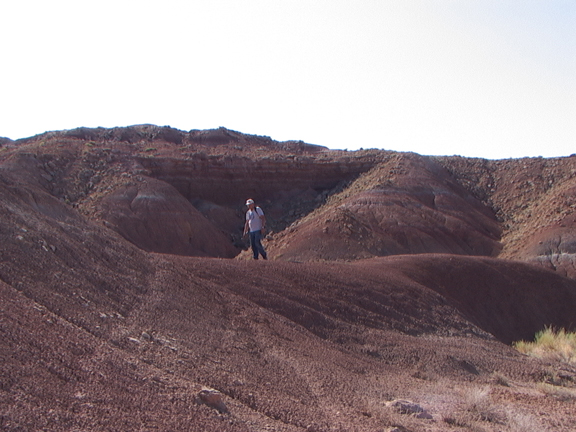
Prospecting in the Uinta Basin,
Utah.
Research and Fieldwork

Prospecting in the Uinta Basin,
Utah.
Research and Fieldwork
My research interests involve statistical, museum and field research. I have continued to refine my dissertation work on identifying and distinguishing species in the fossil record. This has primarily involved statistical analyses of living mammalian species to determine levels of variation typically found in single species and then comparisons of these "reference" samples to the variation found in morphologically similar fossil samples. Thus I have visited a number of major museums in the U.S. and Europe to measure skulls and teeth of living primates, particularly those belonging to the genus Cercopithecus. These are ideal for modeling variation for fossil samples because: 1) In many places of Subsaharan Africa, as many as six species of this genus may be found in the same geographic area, 2) They are morphologically very similar in the skeleton, particularly the teeth, 3) One may therefore experiment with various statistical techniques to see how well they detect multiple species samples in situations similar to those encountered in the fossil record. I am currently expanding this research to fossil species of the Middle Eocene artiodactyl Protoreodon where the changes over time on morphological and metric variation can be studied as well as differences between contemporary species.
For the past ten years, I have been involved in field projects collecting Late Cretaceous, Paleocene, Eocene and Oligocene/Miocene vertebrates (including primates) in South Carolina, Utah, Wyoming, Texas, Panama and Mexico. These field projects span a time period from approximately 70 to 25 million years ago. From 1992 to 1998 I did fieldwork in Late Paleocene and Early Eocene deposits in The Great Divide (Red Desert) Basin in Southwest Wyoming. Eocene mammals are fascinating for a number of reasons. Because during this epoch mammals began to raditate to fill the ecological niches vacated by the extinction of dinosaurs. Thus one can truly study evolutionary modes and patterns. Most of the modern orders of mammals first appear during this time but they are generally very primitive. Also, strange fascinating creatures now long extinct were important fauna in Eocene Ecosystems.
Los Altares Project
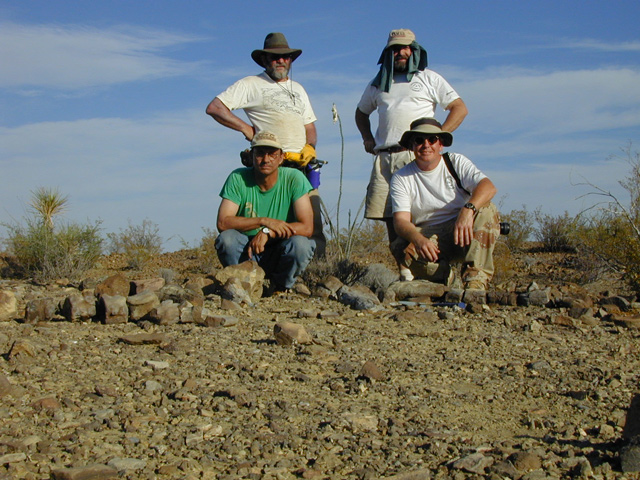
Los Altares Principle Investigators (back left to front right): Dr. Ben Brown; Dr. Jeff Pittman; Dr. Dana Cope and Dr. Jim Westgate, among a plethora of Kritosaurus(a hadrosaur, "Duck-billed" dinosaur) vertebrae, long bone fragments and other skeletal elements.
Starting in 1998, I began my
own project in collaboration with Dr. Ben Brown of the Instituto Nacional
DE Antropologia e Historia (INAH), Cuidad Chihuahua, Chihuahua, Mexico;
Dr. Jeff Pittman of the Department of Geology, University of Lamar, Beaumont,
Texas; and Dr. James Westgate, Department of Geology, University
of Lamar, Beaumont, Texas and Research Associate, Texas Memorial Museum,
University of Texas at Austin. This project is part of a Convenio
betweeen INHA and the University of Texas El Paso for Border Studies.
While others in the Convenio are interested primarily in the archaeology
and ethnohistory of the area, we are responsible for the study of the paleontological
resources. We have investigated Eocene deposits on both sides of the Border
and have been focusing our efforts on a large dinosaur-bearing Late Cretaceous
locality just south of Big Bend National Park. This locality, in addition
to a large number of intact, sometimes articulated dinosaur bones, also
has a diverse fauna including many other vertebrate and invertebrates.
Canyon de Santa Elena, Northeast
Chihuahua, Mexico
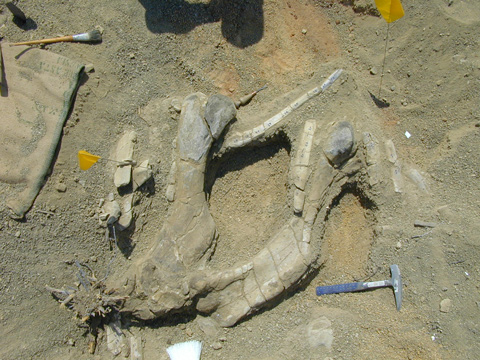
Partial Kritosaurus ("duck-billed"
dinosaur) skeleton including humeri, scapulae and ribs.
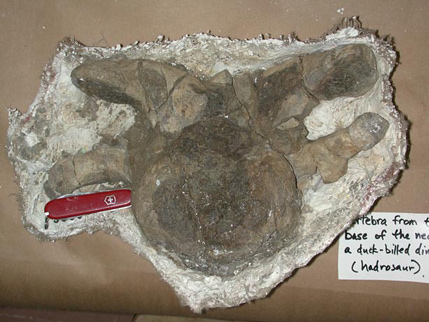
Kritosaurus vertebra.
Uinta Basin Project
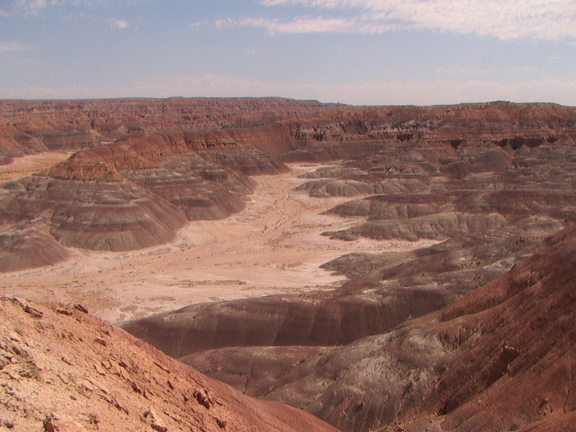
Typical Uinta B Formation (Middle Eocene) badlands.
Uinta Basin Project
More
Pictures
As an anthropologist, it is pretty
unusual that I am doing paleontological work that does not involve, in
some cases, localities that yield fossil primates. Students interested
in vertebrate paleontology in general at the undergraduate level would
be best served by majoring in Geology (in all it's aspects) or Biology
(with a focus in comparative anatomy, evolutionary theory, ecology, zoology,
etc.).
Other Links
Noteworthy
Publications, Presentations